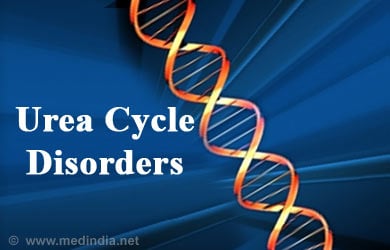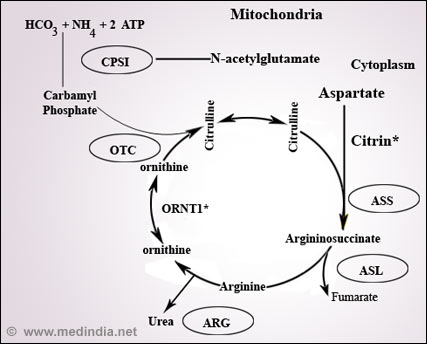About
A urea cycle disorder is a
A urea cycle disorder (UCD) is a genetic condition brought about by gene mutations that cause ammonia concentration in the blood to rise much higher than normal.
It is brought about by a deficiency of any one of the six enzymes that are functional in the urea cycle.

The urea cycle involves several steps which are responsible for the conversion of nitrogen (a by-product of protein metabolism) to urea. This urea is then removed from the body through the urine.
In the case of those with urea cycle disorders, the nitrogen is not converted to urea but accumulates in the blood in form of ammonia, a highly toxic substance. Hyper ammonemia occurs as a result of increased levels of ammonia and once this toxic substance reaches the brain, it can cause irreversible impairment, coma or even death!
The global incidence of UCD is thought to be around 1:30,000 live births, although no population studies have been carried out to establish a proper estimate. Plenty of UCD cases go undiagnosed, so the exact incidence of the disease remains unknown.

Urea cycle disorders are categorized as inborn errors of metabolism (IEM), which are a group of diseases that are capable of causing brain damage and death in newborns and small children. It has been suggested that about 20% of Sudden Infant Death Syndrome (SIDS) cases may actually be due to an undiagnosed IEM, such as urea cycle disorder.
Urea cycle disorders appear in both adults and children. Newborns with severe mutations become extremely ill within 36-48 hours of birth. Both children and adults who have less severe mutations either remain undiagnosed or present with symptoms much later in life.
The onset and the intensity of the condition is dependant on the specific mutations and in the amount of enzyme function available for nitrogen metabolism.
Some mutations are very severe as they fail to produce any enzyme that is needed to carry out nitrogen breakdown. Some mutations are mild to moderate, which means that a certain amount of the enzymes will be present and this would enable the detoxification of ammonia.
Often, adults with subtle symptoms go unnoticed or undiagnosed because they produce enough enzymes to adequately remove ammonia until there is an interference with the enzyme function causing an excessive amount of ammonia to be produced. Usually this interference is brought about by metabolic stressors including viruses, excessive dieting or exercising, high protein intake or certain drugs such as valproic acid, prednisone or other corticosteroids.
There is no definite cure for UCD; however, the condition can be remedied through liver transplant.






